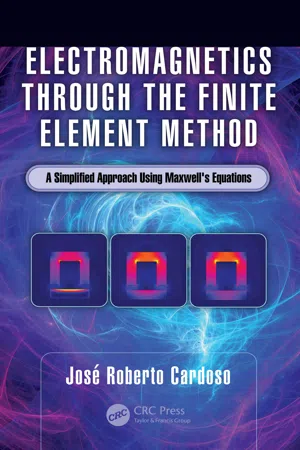1.1 INTRODUCTION
In 1956, the necessity to study the stiffness and deformations of aircrafts’ fuselage for the first time led to the use of the finite element method (FEM), which is credited to John Argyris (1913–2004) (www.argyrisfoundation.org). This method was diffused by Turner and Clough [1], and it is currently one of the most powerful tools used for both the conception and analysis of engineering problems.
Regardless of its conception by mechanical engineers, FEM’s large-scale diffusion occurred in the field of civil engineering, in which it was used, for example, for the analysis of huge concrete structures, such as dams, tunnels, and bridges. The first book on FEM was written by Olgierd Cecil Zienkiewicz (1921–2009) [2]. This book provided an academic approach to the method, which was established as a strict mathematical formula, besides being applied in other engineering fields, such as thermal studies in mechanical engineering and percolation on flow in inhomogeneous media. In electrical engineering, the first FEM application was presented by Peter Peet Sylvester (1935–1996) in an article published in 1969 in the IEEE Transaction on Power System [3].
Even though Zienkiewicz is credited with editing the first book on FEM, he also had the responsibility of presenting it through a complex and dry mathematical formulation, not adequate for the understanding of engineering students. This led to the method being discussed only in graduation courses and in academic environments, such as research labs. The situation in electrical engineering was not that different: Sylvester’s text presented FEM applied to electromagnetism based on the use of the basic concepts of variational calculus, one of the formulations presented by Zienkiewicz, which was also not accessible to undergraduate students. The approaches developed by Sylvester, and others after him, in discussing the application of FEM to electromagnetic studies always introducing them as sophisticated mathematical methodologies created an impression that FEM for electromagnetics was a difficult subject and reserved only to those gifted with advanced mathematics knowledge, when the reality was completely different.
Any new knowledge is not deep enough to search for a simplified alternative, even if that alternative is limited in the beginning. This leads to the need for further research and intense diffusion, which is the beauty of this science. Advanced studies on the use of FEM in three-dimensional electromagnetic fields in the 1990s paved the way for even more advanced mathematical techniques, which, regardless of their elegance, jettisoned undergraduate students from the understanding of this methodology.
Over time, new techniques were introduced to simulate some of the most important phenomena present in electrical engineering. The simplest cases are the static electromagnetic fields, which are not time dependent and are characterized by electrostatics, magnetostatics, and electrokinetics (flow of DC current) studies. Electromagnetic phenomena in a quasi-static regime are the ones present in most industrial settings, mainly those related to designing static and rotating electric machines as well as associated devices.
Eventually, electromagnetic phenomena in a time-dependent state like wave guides and resonant cavities are important for the study of communication devices and antennas and also for solving interference and electromagnetic compatibility problems. In Chapter 2, we discuss the basic equations, based on Maxwell equations, that govern each of these studies, and which will support our further development of discussion in this book.
The main objective of the author is to introduce and familiarize this numeric method to a growing number of interested people. For this the author has dedicated himself, for the last three decades, toward the search of an appropriate way of introducing this method for electrical engineering undergraduate students, taking into account the limitations of mathematical skills of these students, and helping first-time learners of this method.
Our goal is to develope the FEM for solving dedicated electromagnetic problems for the undergraduate electric engineering student based on the basic laws of electromagnetism without using sophisticated mathematical resources. Significant advances for the FEM occurred when high-performance workstations appeared in the 1980s. These workstations had high-performance graphics computing and made the analysis of the problem solving easier using images. As a result, reduction in design time, more reliable solutions, reduction in the number of prototypes, and integration with other productive systems happened. Thus, the use of FEM is closely connected to computing resources that made possible, with impressive speed, the resolution of large, linear systems equations, which made feasible the analysis of more number of design alternatives in short time with accuracies never achieved before. Finally, th...
